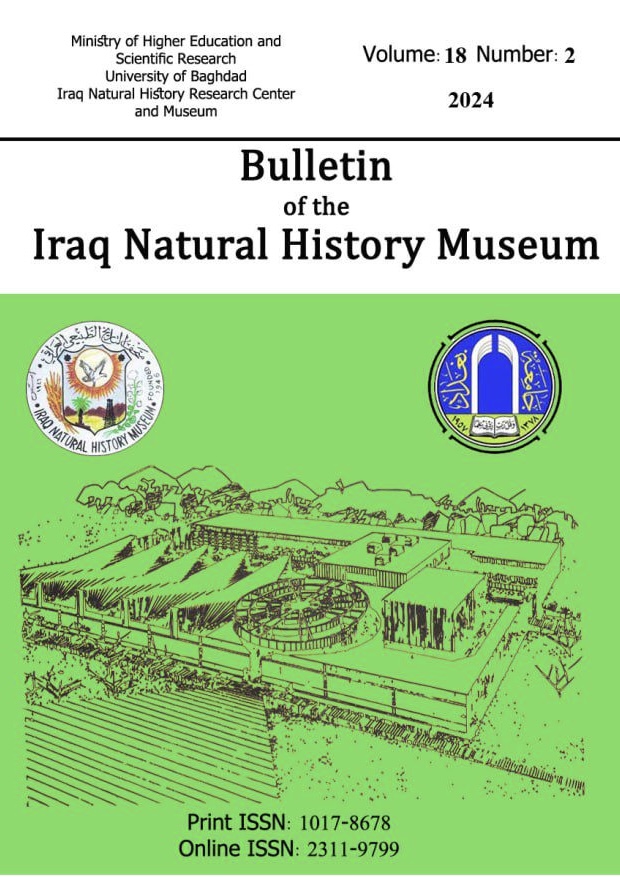Abstract
Convolvulus arvensis L., 1753 (Solanales, Convolvulaceae) is a cosmopolitan polymorphic
perennial herb and one of 15 noxious crop weeds. The species has notable phenoplasticity
among its populations. This study aimed to assess phenoplasticity in 20 morphologically
distinct populations collected from the same habitat in Egypt to understand this feature in
terms of chromosome number and karyotyping. A total of 55 morphological characters were
studied, and the similarity values were assessed using Jaccard’s similarity coefficient. The
morphological characters were distinguished into five groups with variations in chromosome
counting and karyotyping. Accordingly, they were treated as genotypes. These genotypes
include two distinct ploidy levels: tetraploids (2n = 32) and hexaploids (2n = 48). The
hexaploid genotypes had a higher intrachromosomal asymmetry index A1 value than the
tetraploids. Significant chromosomal differences among the studied genotypes were revealed
through an ANOVA test, indicating that quantitative genomic alteration has an essential role
in C. arvensis diversification. The study concluded that the studied phenoplasticity of the
populations of this species was genetically controlled and not attributed to ecological
factors. The importance of cytological studies in assessing the phenoplasticity of C.
arvensis populations is highlighted in this study, especially for those grown in the same
habitat.
perennial herb and one of 15 noxious crop weeds. The species has notable phenoplasticity
among its populations. This study aimed to assess phenoplasticity in 20 morphologically
distinct populations collected from the same habitat in Egypt to understand this feature in
terms of chromosome number and karyotyping. A total of 55 morphological characters were
studied, and the similarity values were assessed using Jaccard’s similarity coefficient. The
morphological characters were distinguished into five groups with variations in chromosome
counting and karyotyping. Accordingly, they were treated as genotypes. These genotypes
include two distinct ploidy levels: tetraploids (2n = 32) and hexaploids (2n = 48). The
hexaploid genotypes had a higher intrachromosomal asymmetry index A1 value than the
tetraploids. Significant chromosomal differences among the studied genotypes were revealed
through an ANOVA test, indicating that quantitative genomic alteration has an essential role
in C. arvensis diversification. The study concluded that the studied phenoplasticity of the
populations of this species was genetically controlled and not attributed to ecological
factors. The importance of cytological studies in assessing the phenoplasticity of C.
arvensis populations is highlighted in this study, especially for those grown in the same
habitat.
